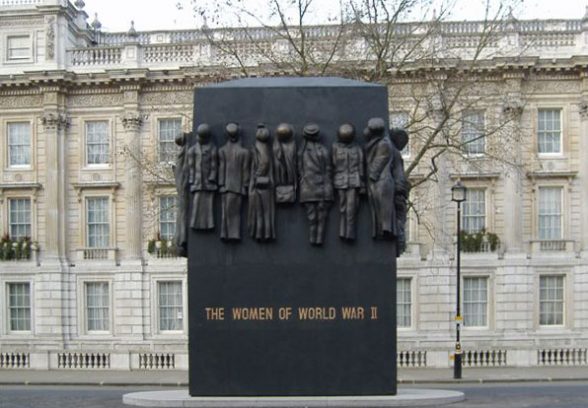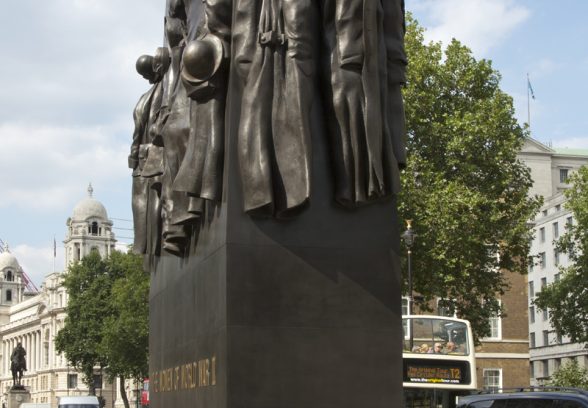This website uses cookies
This website uses cookies to enable it to function properly and to analyse how the website is used. Please click 'Close' to accept and continue using the website.




London: Women of World War II
Architect: John W. Mills, 2005
Location: Whitehall London
‘Let the women of Britain come forward’ said Churchill. Over seven million women volunteered for the armed services and supporting roles in ammunitions factories, first aid and the Land Army, in the Second World War; 450,000 were conscripted into the armed forces.
The cause of the women of World War II was championed by Baroness Boothroyd, who raised some of the £1 million on a celebrity episode of Who Wants To Be A Millionaire. Other funds were raised by a charitable trust run by volunteers in York. The memorial replaced a statue of Sir Walter Raleigh, which was moved to Greenwich. The memorial was unveiled by the Queen in 2005, on the 60th anniversary of the end of World War II. Military helicopters flown by all- female crews flew past the memorial to mark the occasion. The London Evening Standard claimed that the swap was an example of New Labour rewriting history. The buccaneering explorer was banished because he was male, imperialist and had introduced tobacco to Britain. A statue to women was more politically correct.
The monument is unashamedly a companion (or competitor?) to the Cenotaph. Its pivotal location on Whitehall has the effect of assuming that the neighbouring ‘Glorious Dead’ are exclusively male, and its size and form deliberately relate (albeit crudely) to Lutyens’ pylon. The choice of bronze separates the two, but also makes the memorial an uncomfortably dark and heavy addition to Whitehall’s street furniture. Around the sides we see the hung-up uniforms of the Army and WRENs, RAF, Red Cross nurses, Land Girls, Munitions Factory workers, Air Wardens and so on: over-sized and somewhat crudely rendered. It is important to remember that although many women lost their lives in replacing men’s duties, this monument is dedicated to all of those who served. It is a tribute to an entire generation, many of whom are still alive today.
John W. Mills (b. 1933) trained at Hammersmith and the Royal College of Art before completing national Service. From an early stage he specialised in figurative sculpture in metal, and has been President of the Royal Society of British Sculptors in 1982 and 1997. His other commemorative work includes the D-Day coin for the Royal Mint, The William Blake memorial, as well as a number of religious works.
Gavin Stamp & Jon Wright
Either enter the name of a place or memorial or choose from the drop down list. The list groups memorials in London and then by country

Become a C20 member today and help save our modern design heritage.